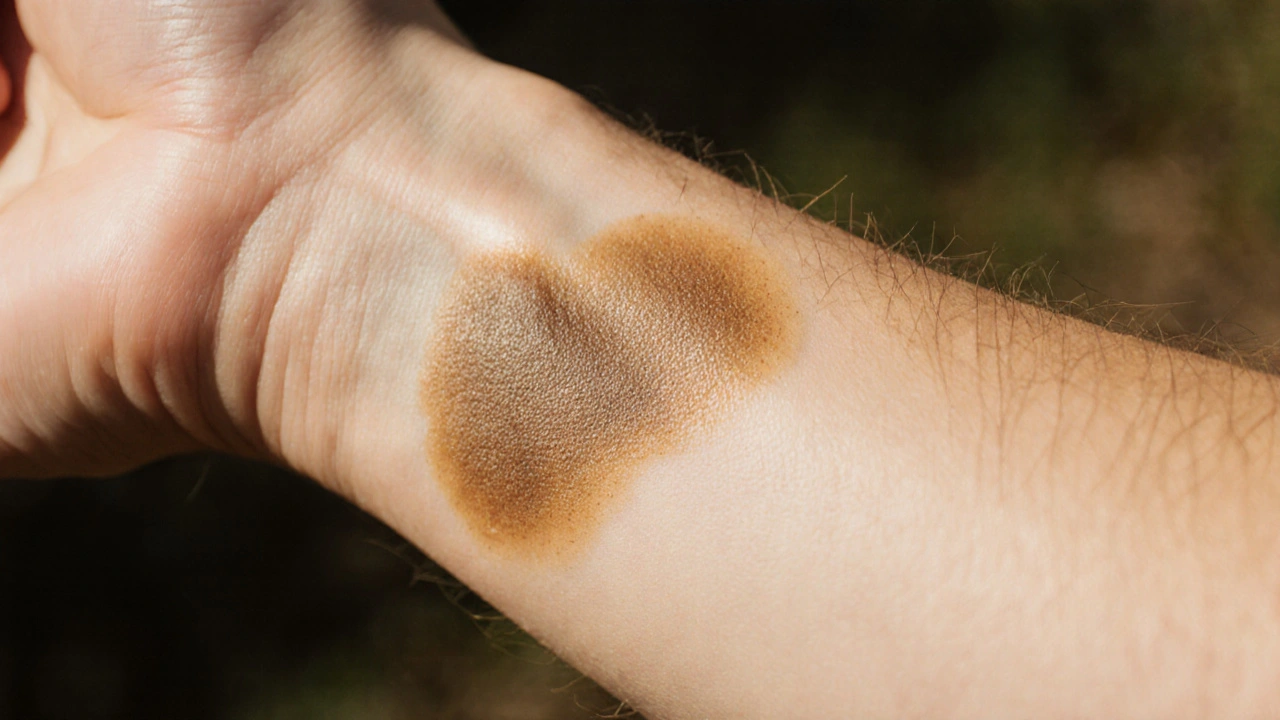Tinea Versicolor – What You Need to Know
When dealing with Tinea versicolor, a common yeast infection that creates light‑ or dark‑colored patches on the skin. Also called pityriasis versicolor, it usually shows up on the chest, back, shoulders and arms. The condition stems from an overgrowth of Malassezia, a lipophilic yeast that normally lives harmlessly on human skin. When the yeast multiplies, it interferes with pigment production, leaving uneven skin discoloration that may look pink, brown or white. Knowing the cause makes spotting the problem a lot easier.
How Doctors Spot the Problem
Diagnosis often starts with a simple visual check, but a quick Wood's lamp, a UV light that makes the patches fluoresce can confirm the suspicion in seconds. Under the lamp, affected areas may glow yellow‑green, giving clinicians a clear clue without a lab test. If the picture isn’t obvious, a skin scraping examined under a microscope can reveal the yeast’s characteristic spores. These tools let doctors differentiate tinea versicolor from other rash‑like conditions such as eczema or psoriasis, ensuring the right treatment plan.
Once the diagnosis is set, treatment focuses on reducing the yeast load. Antifungal creams, topical agents like terbinafine, clotrimazole or selenium sulfide are the first line of attack. Most people apply the cream once or twice daily for two to four weeks, and the color often normalizes within a month. For stubborn cases, oral antifungal medication such as terbinafine tablets may be prescribed, but doctors usually reserve pills for widespread or recurrent infections because of potential side effects.
Besides medication, simple lifestyle tweaks help keep the yeast from bouncing back. The yeast loves oily skin, so using gentle, oil‑free cleansers and avoiding heavy body lotions can limit its food supply. Sweaty environments—think gyms, hot tubs or humid climates—also encourage growth, so showering promptly after exercise and wearing breathable fabrics are smart moves. Some people find that weekly use of a medicated shampoo on the back and shoulders adds an extra layer of protection.
If you’ve dealt with tinea versicolor before, you know the patches can return, especially in summer. Regular self‑checks, especially after a beach trip or a sweaty workout, let you catch the early signs before they spread. Early treatment with the same antifungal cream you used the first time often clears things up quickly, saving you from a longer course of medication.
Below you’ll find a curated list of articles that dive deeper into every aspect we just covered—diagnostic tools, treatment options, prevention tips, and answers to the most common questions about tinea versicolor. Explore the collection to get the detailed guidance you need to manage this skin condition confidently.
